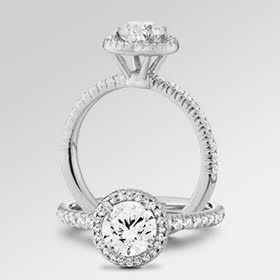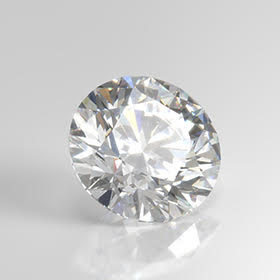Man-made diamonds have gained huge popularity in the present day and are an incredible choice for the center stone in wedding, and engagement rings, as well as in contemporary pieces of jewelry. Most people choose man-made diamonds over naturally mined diamonds since they have social and environmental advantages. However, there are many myths or misconceptions associated with lab-grown diamonds, and as a result of which, some customers hesitate to purchase them.
The following guide will help to know the real facts about lab-made diamonds and bust all the misconceptions related to it.
- Lab-grown diamonds are real not, fake, and synthetic
Lab created diamonds are not artificial or synthetic. These diamonds are real, just like natural diamonds, and are manufactured by replicating similar conditions of the earth in a laboratory rather than mining from under the earth's crust. Industry experts have validated that lab-made diamonds are similar to real diamonds and have similar chemical, optical, physical, and thermal features.
- Lab-made diamonds are inferior to earth-mined diamonds
Lab-grown diamonds have the same quality as mined diamonds. No thermal, optical, chemical or physical composition difference exists in lab-grown and mined diamonds. Customers who buy lab-grown diamonds from New World Diamonds, especially CVD diamonds, can benefit from better shine and brilliance since lab-made diamonds do not contain any nitrogen impurities that are mostly present in mined diamonds. These diamonds are composed entirely of carbon. Type IIA Natural diamond is an extremely rare form of diamond, and 98% of these diamonds contain nitrogen impurities and are also not the purest form of the diamond. In contrast, CVD diamonds are far superior in quality compared to mine counterpart.
- lab-grown diamonds are cheap since they are poor in quality
Lab-grown diamonds are manufactured using advanced and modern technology in labs, whereas earth-mined diamonds are formed under the earth’s crust. There is no expense incurred in mining lab-grown diamonds, so customers can get these diamonds at cheaper rates. The quality of lab-grown diamonds is not inferior to that of natural diamonds.
- lab created diamonds are not certified
Certifying agencies and diamond grading agencies that certify and grade natural diamonds also certify lab-grown diamonds, for instance, SGL, IGI, and GIA.
- Lab-grown diamonds then change color
Lab-grown diamonds are similar to earth-mined in physical composition, optics, color, thermal composition, etc. These diamonds don’t change color as they are resilient, like earth-mined diamonds.
- Lab-grown diamonds affect the environment in the same way as natural diamonds
Lab-grown diamonds are not formed like mined diamonds. As a result, no mining is required for lab-grown diamonds. As a result, social cost and environmental costs can be avoided. As per experts, one carat of lab-made diamond saves 250 tons of land and 109 gallons of water. Ethical conflicts can be avoided with the manufacture of lab-grown diamonds as they do not require any ambiguous supply chain as well as mining conditions and their associated implications can be avoided.
- Lab-grown diamonds are all CVD diamonds
Lab-grown diamonds are not all CVD diamonds. Lab diamonds are grown in labs through high-pressure high temperature (HPHT) and chemical vapor deposition process (CVD). CVD technology replicates the diamond creation process that is done while mining natural diamonds below the surface of the earth. High-pressure, high temperature processes do not replicate this process entirely as it starts with mined diamond seed which uses molten metal influx and graphite to create lab-grown diamonds. This is the result of why HPHT diamonds contain natural impurities. CVD diamonds are the purest lab-grown diamonds, and they do not have a classification of type IIA as per diamond grading labs.










